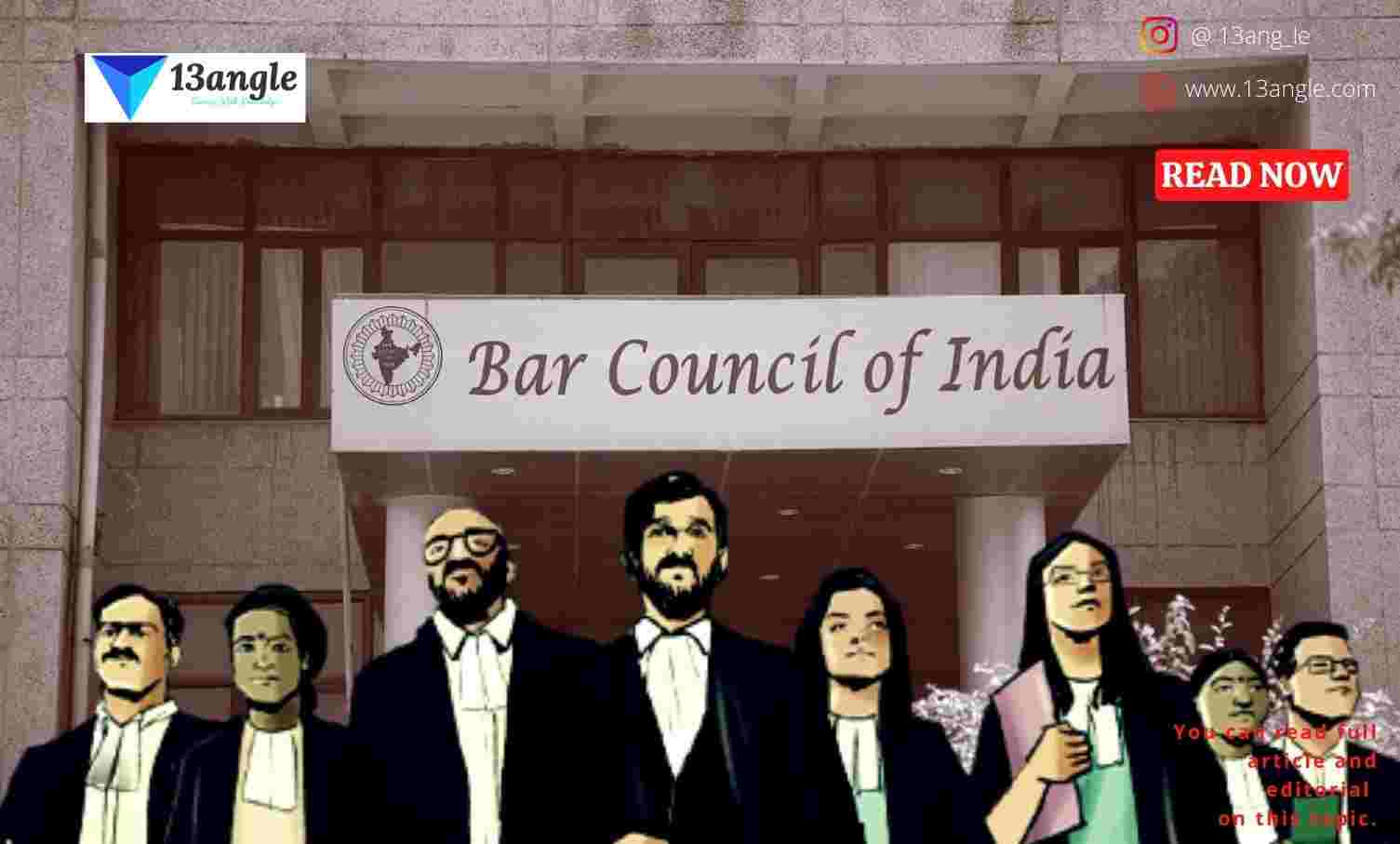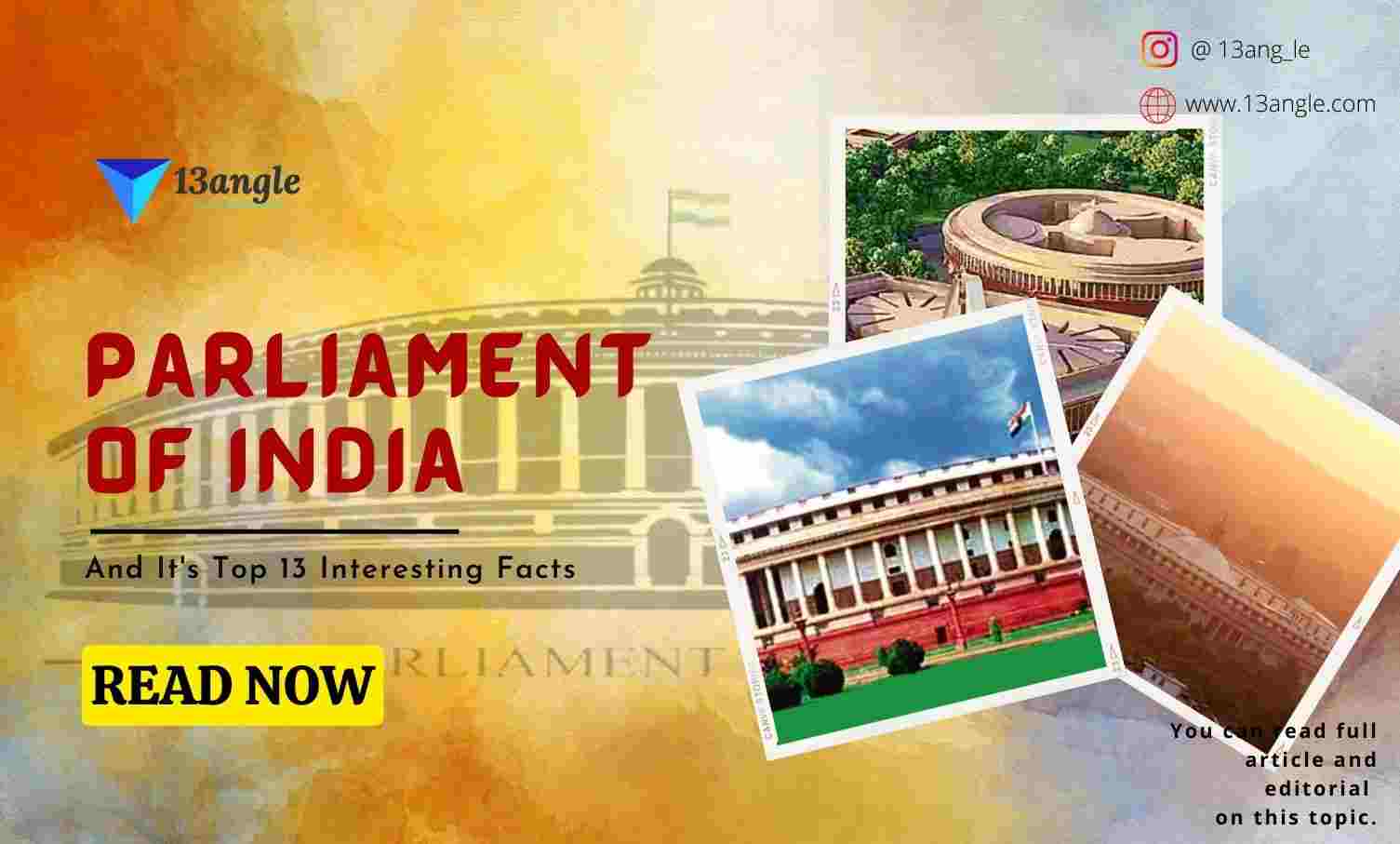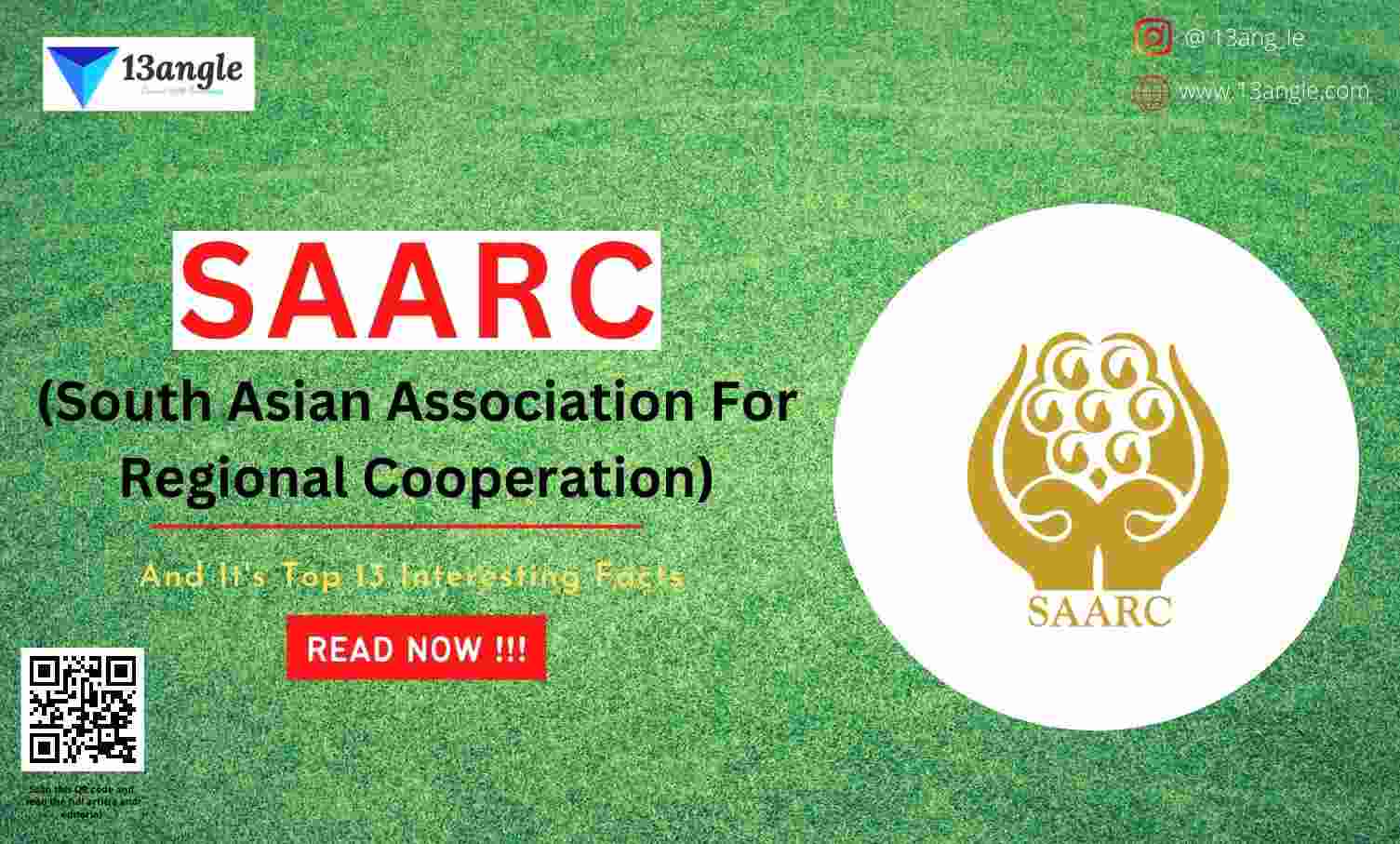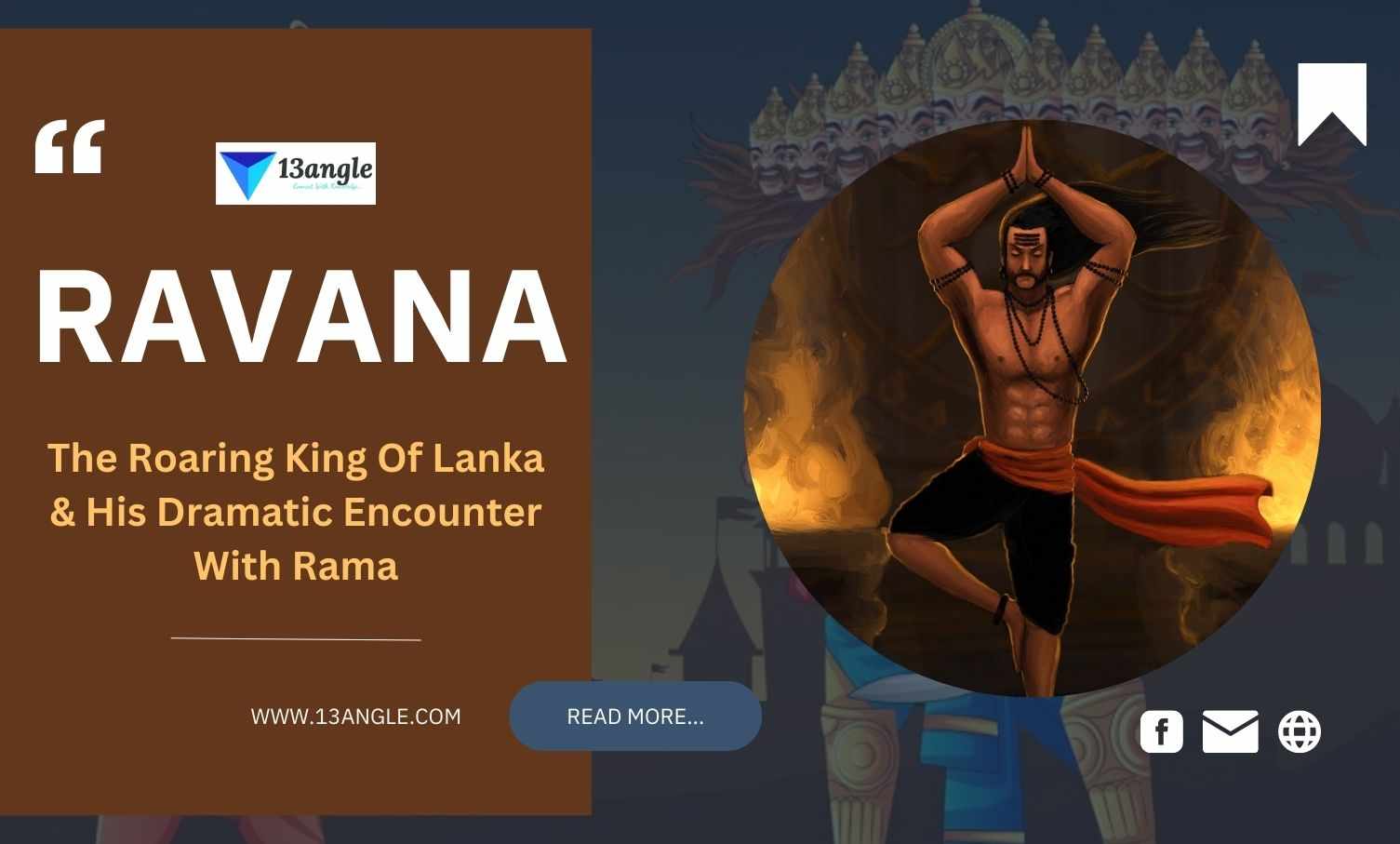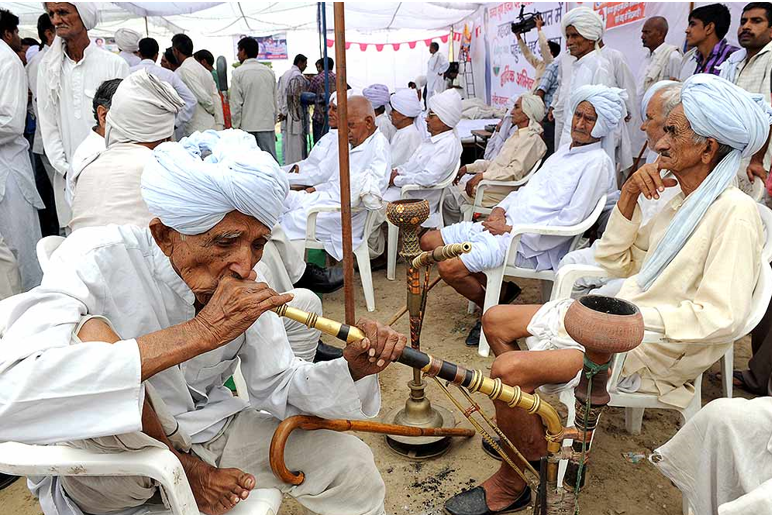
Introduction
- Jats are an agricultural caste group in Haryana, and seven other states in North India, notably in Uttar Pradesh, Rajasthan, and Gujarat. In Haryana, they are the predominant caste, and therefore politically influential. Jat is an elastic label applied to a wide-ranging community from simple landowning peasants to wealthy and influential Zamindars. Jats can be Hindu, Muslim, or Sikh by religion. Hindu Jats know and worship the Gods of the Sanskrit tradition and like all Hindus, hold the cow in high regard, but they also follow many local religious practices and observances, and worship local deities. The Jats make up roughly a quarter of Haryana’s population, a figure that would be even higher in the central districts covering Rohtak, Sonipat, Jhajjar, Jind, Panipat, Hisar and Bhiwani. That dominance is all the more pronounced when it comes to the second criterion laid down by Srinivas. The community probably owns three-fourths of agricultural land in Haryana, with the Jat being synonymous with the ‘zamindar’ just as much as the Baniya with the trader.


- The Jats are a peasant caste widely distributed throughout northern India and Pakistan. They form geographically separate endogamous groups that have become integrated into the local community as distinct castes. These groups are possibly of differing origins and go by various names. In some regions they call themselves Baloch, Pathan, or Rajput, rather than Jat. They are, however, quite separate from the communities of peddlers, artisans, and entertainers of Afghanistan who are also designated by the name Jat. The Jats have dominated land ownership in western UP since at least the mid-19th century. The introduction of the Green Revolution strengthened their position further. From the 1960s onwards, Chaudhary Charan Singh, organized the Jats and other middle castes under the banner of the Kisan movement.
History
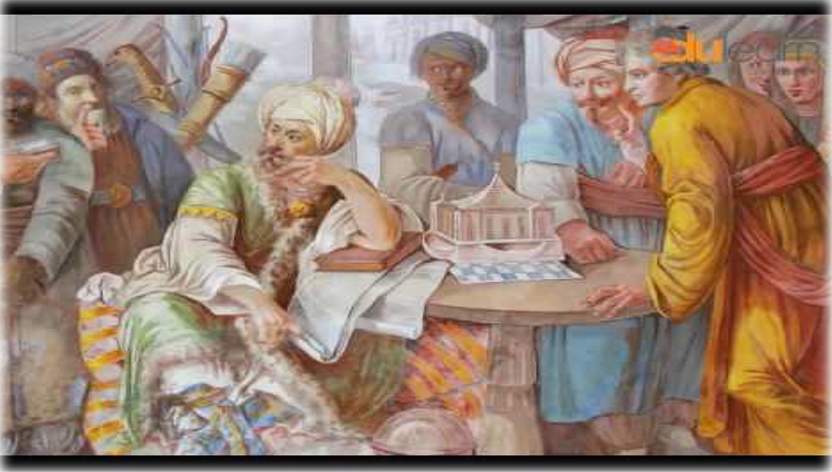
- Jats are commonly considered to be of Indo-Aryan stock in view of the similar ethnological, cultural, physical features, and common practices. According to Dr. Natthan Singh, “Jats were the pure Aryans and their original homeland was Sapta Sindhu”. On the basis of historical facts, the Jats are reported to be present in India from 3102 BC. They had to migrate from India for economic, social, and political reasons for some period but they returned back to India. In the migration also they did not leave their language and cultural traditions. Due to this reason, only Jats do not have linguistic or physical similarities with Huns and Scythians.
Origin
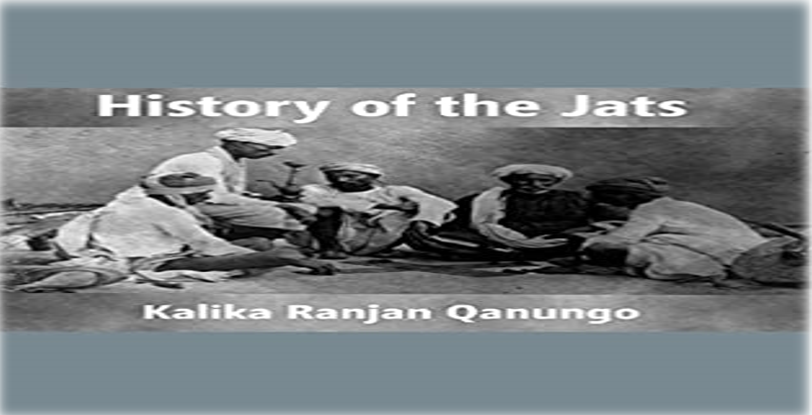
- It is now generally accepted that the Jats who made the northern plains of India their home were of Aryan stock. The origin of the Jats has been exhaustively dealt with by K.R. Qanungo, who states emphatically that the Jats are of Aryan stock (Hindus) that came from Rajasthan into Punjab. The Jats had their origins in pastoralism in the Indus valley and gradually became agriculturalist farmers. The Jats came into existence in the seventeenth century, when they formed a powerful kingdom at Bharatpur after rebelling against the Mughal Emperor Aurangzeb. Suraj Mal was the only Jat leader who welded the scattered Jats in one powerful state. The Mughal Empire functioned by devolving authority and never had direct control over its rural grandees. It was the zamindars who gained most from the rebellions, increasing the land under their control. The triumphant even attained the ranks of minor princes, such as the Jat ruler Badan Singh of the princely state of Bharatpur.
Migration


Jats In Delhi Territory
- Between the eleventh and the sixteenth centuries, Jat herders at the Sind migrated up along the river valleys, into Punjab, which may have not been cultivated in the first millennium.] Many took up tilling in regions such as Western Punjab, By early Mughal times, in Punjab, the term “Jat” had become loosely synonymous with “peasant”, and some Jats had come to own land and exert local influence. Over time the Jats became primarily Muslim in western Punjab, Sikh in eastern Punjab, and Hindu in the areas between Delhi Territory and Agra, with the divisions by faith reflecting the geographical strengths of these religions.] During the decline of Mughal rule in the early 18th century, the Indian subcontinent’s hinterland dwellers, many of whom were armed and nomadic, increasingly interacted with settled townspeople and agriculturists. Many new rulers of the 18th century came from such martial and nomadic backgrounds. The effect of this interaction on India’s social organization lasted well into the colonial period. During much of this time, non-elite tillers and pastoralists, such as the Jats or Ahirs, were part of a social spectrum that blended only indistinctly into the elite landowning classes at one end, and the menial or ritually polluting classes at the other. During the heyday of Mughal rule, Jats had recognized rights.
Hindu Jats
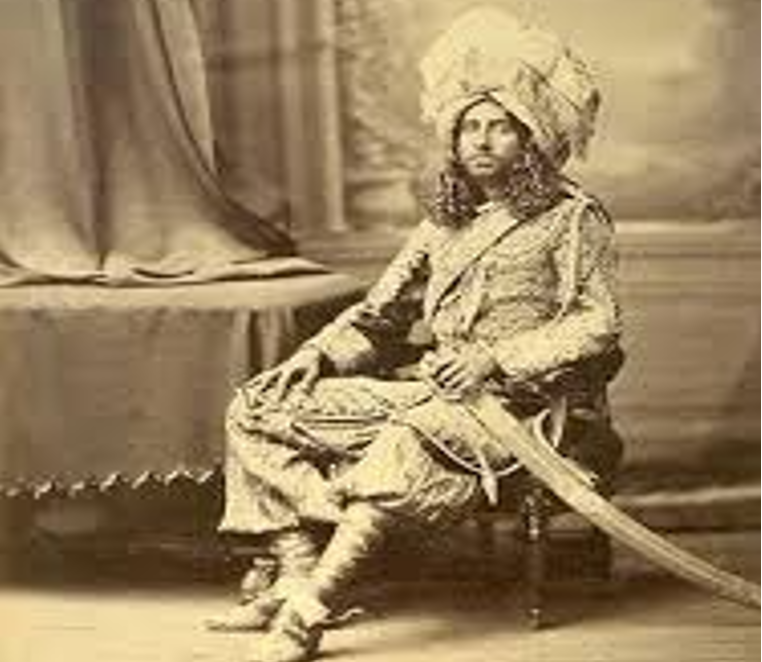
In 1669, the Hindu Jats, under the leadership of Gokula, rebelled against the Mughal emperor Aurangzeb in Mathura. The community came to predominate south and east of Delhi after 1710.[The Jats had moved into the Gangetic Plain in two large migrations, in the seventeenth and eighteenth centuries respectively. They were not a caste in the usual Hindu sense, by the mid-eighteenth century, the ruler of the recently established Jat kingdom of Bharatpur, Raja Surajmal, felt sanguine enough about durability to build a garden palace at nearby Dig (Deeg). According to the historian, Eric Stokes
When the power of the Bharatpur raja was riding high, fighting clans of Jats encroached into the Karnal/ Panipat, Mathura, Agra, and Aligarh districts, usually at the expense of Rajput groups. But such a political umbrella was too fragile and short-lived for substantial displacement to be effected.
Muslim Jats
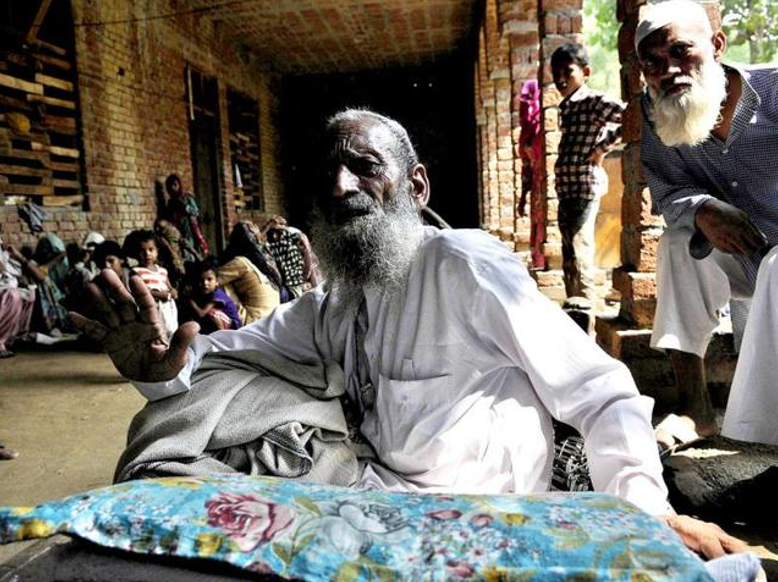
- When Arabs entered Sindh and other Southern regions of current Pakistan in the seventh century, the chief tribal groupings they found were the Jats and the Med people. These Jats are often referred to as Zatts in early Arab writings. The Muslim conquest chronicles further point at the important concentrations of Jats in towns and fortresses of Lower and Central Sindh, Muslim Jats are found in Pakistan and India.
Sikh Jats
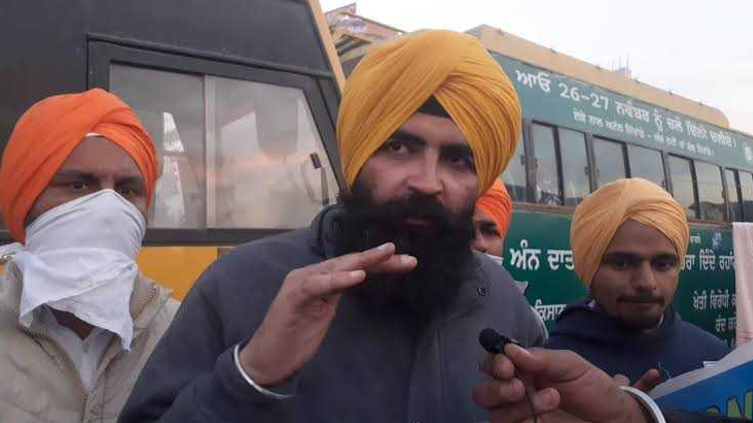
The first large-scale conversions of Jats are commonly held to have begun during the time of Guru Arjan (1563–1606). While touring the countryside of eastern Punjab, he founded several important towns like Tarn Taran Sahib, Kartarpur, and Hargobindpur which functioned as social and economic hubs, and together with the community-funded completion of the Darbar Sahib to house the Guru Granth Sahib and serve as a rallying point and center for Sikh activity, established the beginnings of a self-contained Sikh community, which was especially swelled with the region’s Jat peasantry. They formed the vanguard of Sikh resistance against the Mughal Empire from the 18th century onwards. At least eight of the 12 Sikh Misls (Sikh confederacies) were led by Jat Sikhs, who would form the vast majority of Sikh chiefs.
Further waves of Jat conversions, from Hinduism to Sikhism, continued during the preceding decades, according to censuses published in the Gazetteers during the colonial period in the early 20th century. Writing about the Jats of Punjab, Sikh writer Khushwant Singh said that their attitude never allowed them to be absorbed in the Brahminical side.
Jat Reservation Agitation

The Jat Reservation Movement was a series of violent protests in February 2016 by the Jat people of North India, especially in the state of Haryana, which paralyzed the state for 10 days. The protestors sought the inclusion of their caste in the Other Backward Class (OBC) category, which would make them eligible for affirmative action benefits. Besides Haryana, the protests also spread to the neighboring states, such as Uttar Pradesh, Rajasthan, and also the National Capital Region Starting on 12 February, the Jats organized non-violent protests for reservation by blocking the railway lines and roads, while non-Jats opposed their demands organized counter-protests. On 18 February, a group of non-Jats protesters clashed violently with a group of lawyers protesting against the 2016 JNU sedition controversy, mistaking the lawyers for Jats. Later on, they also came into conflict with the Jat students.
Following these incidents, several incidents of inter-caste violence took place across Haryana.
Background
The Central Government of India as well as the various State Governments categorizes certain socially backward castes as Other Backward Classes (OBC). The castes listed in this category have been eligible for affirmative action benefits since 1991. Collectively, these castes have reserved quotas in government jobs, admissions to educational institutes, scholarships, and other areas. The communities which are included in OBC are different in different states. The OBCs have 27% reservation; in addition, there are other classes that have Scheduled Castes (15%) reservation and the Scheduled Tribes (7.5%) reservation. In all, 49.5% of the seats are reserved for these three groups. Some state governments have tried to create additional reservation quotas, but the Supreme Court of India has ruled that the reservation cannot exceed 50%.
Like many other castes, the Jats have sought to get themselves included in the OBC category in order to get the reservation benefits. Before the 2016 protests, they had already been given OBC status in 7 states: Chhattisgarh, Delhi, Himachal Pradesh, Madhya Pradesh, Rajasthan, Uttar Pradesh, and Uttarakhand. However, Jats were not included in the Central Government’s list of OBC castes. Also, in Punjab and Haryana, the Jats did not enjoy any reservation benefits. In Rajasthan, the Jats from Bharatpur and Dholpur districts were excluded from the OBC list, as the former kingdoms of Bharatpur and Dholpur had been ruled by Jats
In July and September 2010, the Akhil Bhartiya Jat Arakshan Samiti organized protests in Delhi and Haryana seeking OBC status for Jats. One person was killed in this agitation. In 2011, the protesters blocked railway tracks in Uttar Pradesh and Haryana. In March 2011, the Congress-led United Progressive Alliance (UPA) amended rules to allow NCBC to reconsider its earlier rulings. In February 2012, the Jats resumed their protests, during which one person was killed. In August 2013, the government constituted a special Group of Ministers (GoM) to “engage with representatives of the Jat community”. On 19 December 2013, the Union Cabinet asked NCBC to expedite the process and make a decision based on existing material. It also requested that Bihar be included in the study. As a result, the NCBC dropped the sample survey plan, and the ICSSR then undertook a month-long literature survey.
=> The ICSSR report concluded that:-
- In Haryana, the Jats were educationally backward, although they were financially well-off and well-represented in government posts
- In Delhi, the Jats were educationally backward
- In Himachal Pradesh, Rajasthan, Uttar Pradesh, and Uttarakhand, the Jats were educationally backward and under-represented in Government services.
The NCBC, however, disagreed with the report’s conclusion about the status of Jats in Haryana.
Based on this analysis, on 26 February 2014, the NCBC unanimously ruled that the Jats in Haryana did not meet the OBC classification criteria.
Legal Issues Involved In Granting Reservation To Jats
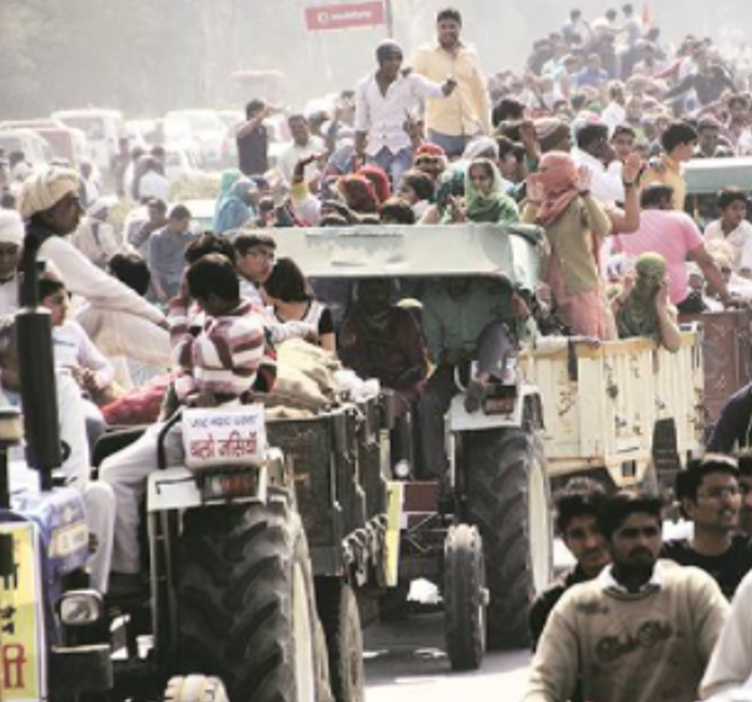
- On March 17, 2015, the Supreme Court quashed the UPA government’s decision to extend the OBC quota in central government jobs to Jats, refusing to accept that Jats were a backward community. Consequently, the reservation was introduced for Jats in Haryana and eight other states — Gujarat, Bihar, Madhya Pradesh, Himachal Pradesh, Delhi, Bharatpur and Dholpur districts of Rajasthan, Uttar Pradesh and Uttarakhand — was set aside. In April 2015, the NDA government filed a review petition in the Supreme Court against the March 17 verdict. A decision on it was pending.

In February 2016, The Jat agitation is centered on Rohtak, Jhajjar, and Bhiwani — the three districts that, along with Panipat, Sonipat, and Hisar, are known as the state’s Jat belt. The three districts are mostly covered under two parliamentary constituencies — Rohtak and Bhiwani — and 18 Assembly constituencies. The BJP won 10 out of these 18 seats, while six went to Congress and two to INLD.
The Jats trashed a government offer to include those with an annual income of less than Rs 6 lakh under an Economically Backward Persons (EBP) category with a 20% quota, to be shared with four other castes: Tyagis, Rors, Bishnois, and Jat Sikhs. The government has now announced it will prepare a draft Bill for reservation, and try to bring it in the Assembly session beginning March 17. However, such a Bill may not stand judicial scrutiny in view of the 50% ceiling on quota in government jobs imposed by the Supreme Court. This ceiling has been reached in Haryana, which has 27% reservation for OBCs, 20% SCs, and 3% for the disabled. This is why the Punjab and Haryana High Court had struck down the Congress government’s 10% percent quota for Jats, Jat Sikhs, Bishnois, Tyagi’s, and Rors as Special Backward Classes.
Leaders
- The protest was held by Hawa Singh Sangwan, a retired CRPF commandant and the Haryana chief of the All India Jat Arakshan Sangharsh Samiti. In 2012, Sangwan had organized a similar protest at the same site, as a result of which the Congress government gave the community the SBC status.

Government Decision
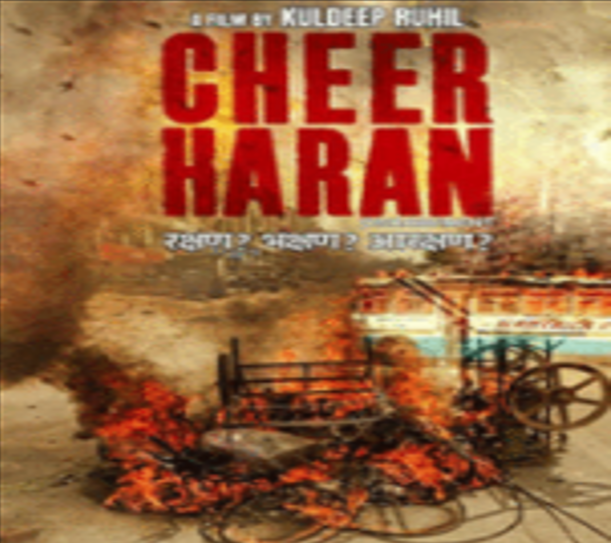
Haryana government decided to grant the OBC status to Jats after their community leaders held a meeting with Union Home Minister Rajnath Singh, said Anil Jain, BJP in-charge of Haryana. The enacted Bill enlists the Jats of Hindu, Sikh, and Muslim jats, Bishnois, Tyagi’s, and Rors in the recently sculpted Backward Classes (C) category, making them eligible for 10% reservation in class 3 and 4, and 6% reservation in class 1 and 2 jobs.
A documentary film was directed by Kuldeep Ruhil, name CHEER HARAN. The story is an attempt to peep into the psyche of Haryana in the aftermath of Jat Reservation Agitation 2016. It’s an attempt to decide the two words Jat and Reservation and understand why the agitation, all of a sudden, turned horribly violent.
Cons Of The Agitation
- There is a huge loss of economic activity not only in the state of Haryana but across the Northern states of India. As the supply of the essential items has been severely impacted, we cannot rule out the impact on inflation. By 25 February, the riots were estimated to have caused a loss of ₹340 billion (US$4.5 billion) in northern India. The Railway Minister said in the Lok Sabha, “Due to the damage to property and cancellation of tickets during the agitation, the Railways have suffered a loss of about Rs 55.92 crore. By 26 February, 30 people had died in the violence.
Difference Between Jatt And Jat
I Am A Jat. People often confuse me for a Jatt. Here’s The Difference Between the Two.
People get confused when they hear about Jatts and Jats. Are Jatts and Jats the same thing? If not, how are they different? Where are they from? Is it Punjab or is it Haryana? It’s a common dilemma. Well me being a Jat, I have had to face this issue a lot and have had to explain it to people every time. So here it is.
Originally, there was only one caste known as ‘Jats’, a traditionally agricultural community (Kisaans as we call them) in Northern India and Pakistan.
Later on, ‘Jats’ got divided into three different communities based on the religion they chose to follow. In western Punjab, Jats became predominantly Muslim, in eastern Punjab, Sikhs (Jats), and in Haryana, the areas between the Delhi region and Agra, predominantly Hindus (Jats).
However, over the years, many Jats have abandoned agriculture in favor of urban jobs. A large number of Jat people serve in the Indian Army including Jat Regiment, Sikh Regiment, etc.
The Jatts form nearly 25% of the population of Punjab. Many of them are landowners and are popularly known as ‘Zamindars’. The followers of Sikhism offer their services in Gurudwaras and provide food to all.
So that’s all you need to know about the differences between a Jatt and a Jat. And if you can’t remember all that, then just know that a Jatt is a Whiskey lover & a Jat is a Hookah lover!
Conclusion
Over the years, several Jats abandoned agriculture in favor of urban jobs and used their dominant economic and political status to claim higher social status.
‘The Jats also provide an important insight into how religious identities evolved during the pre-colonial era. Before they settled in Punjab and other northern regions, the pastoralist Jats had little exposure to any of the mainstream religions. Only after they became more integrated into the agrarian world did the Jats adopt the dominant religion of the people in whose midst they dwelt.’
The Jats conform fully to the idea of a ‘dominant caste’, a term the eminent sociologist M N Srinivas used to refer to any community that is both numerically strong in a village or local area, as well as wields power through control over land.
Top 13 Interesting Facts About The Agitation
The community played an important role in the development of the martial Khalsa Panth of Sikhism.
Thakur Deshraj, Ram Lal Halaand Al-Biruniconsider Jats to be the descendants of Krishna.
In Punjab, the states of Patiala, Faridkot, Jind, and Nabha were ruled by the Sikh Jats.
The story behind the 2016 Jat Reservation Agitation, a series of protests which occurred in North India and led to atleast 30 deaths.
The community has been extra rich due to being owners of the land around Delhi, which is also one of the fertile regions of India.
Jat population is estimated to be around 30 million in South Asia in 2010.
Religion-wise break-up of Jats is as follows: 47% Hindus, 33% Muslims, and 20% Sikhs.
Many Jat people serve in the Indian Army.
The Jat people were designated by officials of the British Rajas a “martial race”.
The Jats participated in both World War I and World War II, as a part of the British Indian Army.
Jats pray to their dead ancestors, a practice which is called Jathera.
The Jat people are subdivided into numerous clans, some of which overlap with other groups.
Some Jat people have become notable political leaders, including the sixth Prime Minister of India, Charan Singh, and the sixth Deputy Prime Minister of India, Chaudhary Devi Lal.

